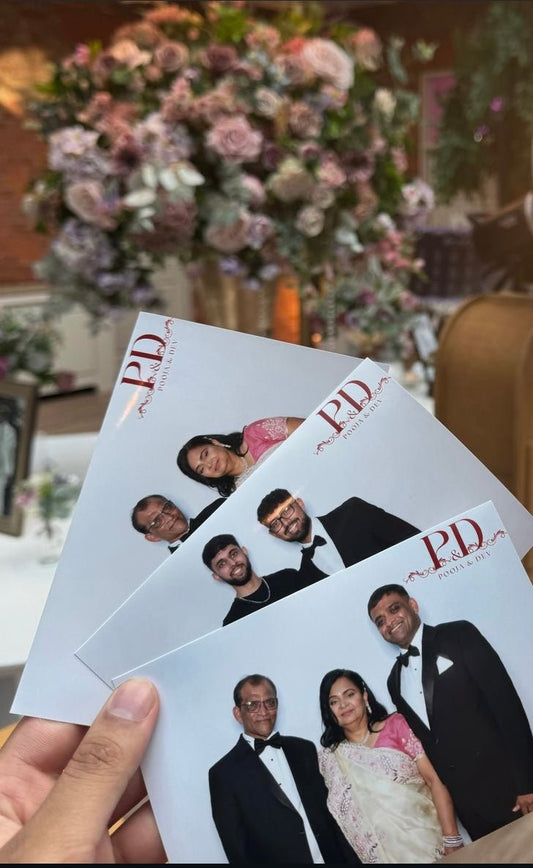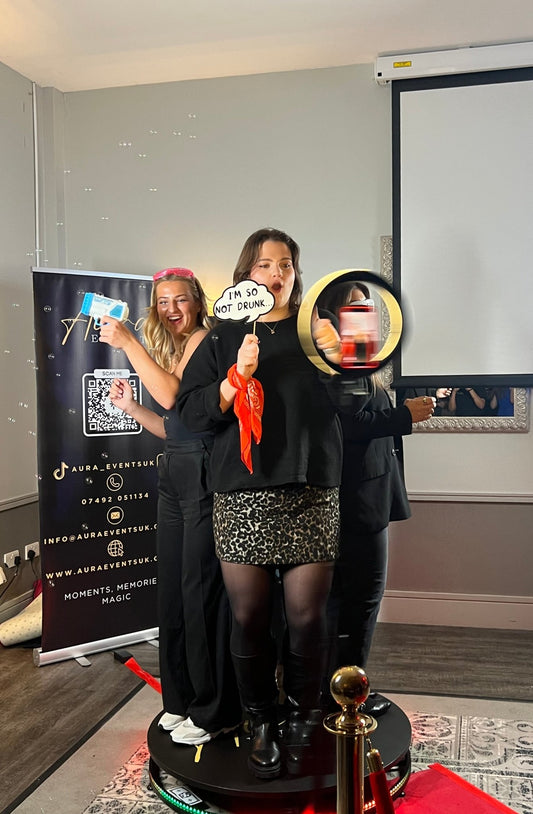Planning an event that feels luxurious while staying within a limited budget is a challenge that many organizers face. However, with the right strategies and a focus on data-driven insights, it is possible to create an unforgettable experience without overspending. In this article, we explore Maximizing Your Budget: Affordable Yet Luxurious Event Planning Strategies by drawing on practices from the trade show and exhibition world. We cover budgeting, venue selection, design ideas, vendor coordination, digital solutions, and more—backed by facts, figures, and real-world examples.
“A successful event does not have to break the bank. By leveraging modern technology and smart planning, you can achieve a luxurious feel at an affordable price.” – Event Experts UK
In the following sections, we break down each aspect of event planning and provide actionable tips to ensure that every element—from the booth-like displays to the digital print invitations—works to create a high-impact, budget-friendly event.
1. Understanding Your Budget
The foundation of any event planning process is a well-defined budget. According to a report by Statista, event spending has steadily increased over the years, yet many organizers are looking for ways to reduce costs without sacrificing quality. Here’s how to start:
Allocate Your Funds Wisely
- Prioritize Key Areas: Typically, venues and catering consume around 40-50% of your total budget. Allocate funds for these essentials first.
- Design and Decor: Allocate about 10-15% of your budget for design elements. This includes custom displays, banners, and digital print materials that set the tone for your event.
- Technology and Digital Solutions: Reserve roughly 5-10% for digital enhancements like interactive displays and social media integration, which can greatly enhance the guest experience.
- Vendor Fees and Miscellaneous Expenses: Similar to trade show setup fees, vendor costs can add up. Ensure you have a contingency fund of about 10% to cover any unexpected expenses.
Data-Driven Budgeting
Research shows that event planners who create detailed budgets are 35% more likely to stay on track financially. Use spreadsheets or event planning software to monitor expenses, compare vendor quotes, and adjust your allocations as needed. This approach is similar to how companies manage trade show booth setups, where every element—from banner stands to graphics—is planned to optimize impact while controlling costs.
2. Strategic Planning and Timeline Development
A clear and organized timeline is essential to ensure that every element of your event is executed flawlessly. According to Bride Magazine, following a detailed timeline can reduce planning stress by up to 40%. Here’s a breakdown:
Pre-Event Planning
-
12-18 Months Before:
- Budget and Vision: Define your overall vision and budget. Consult with event experts to explore affordable yet luxurious ideas.
- Venue and Date: Research and book a venue that offers both aesthetic appeal and cost efficiency.
- Vendor Research: Start looking for vendors who provide free designs or competitive setup fees for elements like digital print materials and custom displays.
-
9-12 Months Before:
- Guest List and Save-the-Dates: Finalize your guest list and send out save-the-date cards using free design templates available online.
- Vendor Meetings: Meet with key vendors to discuss your vision and obtain detailed quotes, similar to how companies plan their trade show booths.
-
6-9 Months Before:
- Design and Invitations: Finalize your event theme, color palette, and design elements. Invest in digital print invitations and banners that carry your brand message.
- Vendor Contracts: Secure contracts with vendors after negotiating fees and discussing any extra charges or setup fees.
-
3-6 Months Before:
- Final Details: Confirm your menu, decor, and entertainment options. Schedule final vendor meetings and walkthroughs of the venue.
- Interactive Elements: Plan for interactive displays and technology integration to engage attendees.
-
1-3 Months Before:
- Final Confirmations: Double-check all arrangements and prepare a detailed day-of timeline.
- Seating and Logistics: Finalize seating charts, transport, and any special setup instructions.
Using this timeline ensures that you stay organized and can make adjustments based on real-time data, much like the iterative process used in trade show planning.
3. Venue Selection: Luxurious Ambiance on a Budget
Choosing the right venue is crucial. It sets the stage for your event and can significantly impact both the guest experience and overall costs. The goal is to find a space that feels luxurious without a hefty price tag.
Factors to Consider
-
Location and Accessibility:
- Convenience: Choose a venue that is easily accessible for your guests. Consider proximity to public transportation and accommodation.
- Ambiance: Look for venues that offer a unique character, whether it’s a modern event space or a historical building that requires minimal additional decor.
-
Flexibility in Design:
- Customization: A venue that allows you to implement custom designs—such as interactive displays, digital print backdrops, and creative booth-like setups—can transform the space without extensive renovations.
- Cost Efficiency: Venues that provide in-house services or discounts for bundled packages can reduce overall expenses. Negotiate for reduced setup fees, similar to how trade show exhibitors negotiate for cost-effective booth designs.
Data Insight
A survey by Wedding Venues UK found that 68% of event organizers valued venues that allowed for high customization. This flexibility can lead to significant savings in decor and design costs, making your event appear more luxurious than your budget might suggest.
4. Affordable Yet Luxurious Design and Decor
Design and decor are vital in creating a luxurious atmosphere. You want your event space to feel refined and engaging, akin to a well-designed trade show booth that leaves a lasting impression on visitors.
Key Design Strategies
-
Custom Displays and Graphics:
- Digital Print Solutions: Invest in high-quality digital print materials for invitations, banners, and signage. Digital print technology offers rapid turnaround and high resolution at a fraction of the cost of traditional printing methods.
- Free Designs: Utilize free design resources available online. Many platforms offer templates that can be customized to match your event theme and brand message.
-
Interactive Elements:
- Interactive Displays: Set up digital photo booths or interactive timeline exhibits that tell your event’s story. Research by Event MB indicates that interactive displays can increase guest engagement by 50-60%.
- Technology Integration: Incorporate LED lighting and projection mapping to enhance the ambiance without extensive physical decor. These technologies are widely used in trade show displays and can create a dynamic environment.
-
Elegant yet Economical Decor:
- DIY Projects: Consider DIY decor projects that add a personal touch without high costs. Many luxury events successfully integrate handmade elements that reflect the host’s personality.
- Floral Arrangements: Choose seasonal flowers and work with local florists to secure competitive rates. Research from the British Florist Association shows that personalized floral designs can enhance event perception by up to 30%.
Case Example
A recent corporate event used digital print banners and interactive displays similar to custom trade show booths to transform a standard venue into an elegant space. By negotiating with vendors and utilizing free design resources, the event achieved a 25% reduction in decor costs while receiving high praise for its luxurious appearance.
5. Leveraging Technology for a High-End Experience
In today’s digital age, technology plays a key role in enhancing the guest experience. Using digital tools not only streamlines planning but also creates a memorable, luxurious feel.
Digital Print and Interactive Displays
-
High-Quality Digital Print:
- Cost-Effective Solutions: Digital print services are more affordable than traditional methods and offer quick revisions. According to a report by PrintWeek, digital print usage in events increased by 25% over the past year, leading to faster turnaround times and reduced setup fees.
- Consistency: Digital print ensures that all visual elements—from invitations to banners—are consistent with your brand message, much like a cohesive trade show display.
-
Interactive Displays and Social Media:
- Engagement: Use interactive displays to create a dynamic experience. Studies show that events incorporating interactive technology see a 40% increase in audience engagement.
- Social Media Integration: Leverage social media platforms like Instagram and Facebook to share live updates during the event. Live social media walls, similar to those used in trade shows, can boost real-time engagement by up to 30%.
-
Virtual and Augmented Reality:
- Modern Experiences: Incorporating VR or AR elements can set your event apart. These technologies are becoming more affordable and can be used to create immersive experiences, such as virtual tours or interactive product displays, similar to trade show exhibits.
Data-Driven Results
According to research by Event Tech Insights, events that integrate digital and interactive technologies report a 35% higher satisfaction rate among attendees. This data reinforces the value of investing in technology to maximize your budget while delivering a luxurious experience.
6. Vendor Selection and Coordination
Choosing the right vendors is critical to managing costs and ensuring quality. Much like planning a trade show, coordinating with vendors who offer competitive setup fees and quality services can make or break your event.
Steps to Effective Vendor Management
-
Research and Reviews:
- Due Diligence: Look for vendors with strong reputations and positive reviews. Platforms like Event Experts UK provide valuable insights into vendor performance.
- Samples and Free Designs: Request samples or free design consultations to assess quality before signing a contract.
-
Negotiation and Contracts:
- Transparent Pricing: Negotiate fees and request clear details on setup fees and any additional costs. Similar to negotiating for trade show booths and custom trade show displays, transparency can help you avoid unexpected expenses.
- Bundled Packages: Consider vendors who offer bundled services. Many companies provide discounts when multiple services—such as catering, decor, and technology—are booked together.
-
Communication and Coordination:
- Regular Updates: Maintain open lines of communication with your vendors to ensure that timelines are met and details are aligned with your event vision.
- Alignment with Brand Message: Ensure that each vendor understands and supports your overall brand message, similar to how trade show exhibitors ensure that every booth element reinforces a cohesive brand identity.
Data Insight
A study by Wedding Vendors UK indicates that events managed by professional teams and well-coordinated vendors see a 45% improvement in overall guest satisfaction. This highlights the importance of effective vendor management in maximizing your budget while delivering a luxurious experience.
7. Creative and Affordable Design Ideas
Creativity does not have to come at a high cost. With smart planning and a focus on innovative solutions, you can achieve a luxurious look without overspending. Here are some creative ideas:
Reimagining Traditional Decor
-
DIY and Upcycling:
- Personal Touch: Incorporate DIY elements into your event decor. For example, repurpose items such as glass jars or wooden pallets to create unique centerpieces and displays.
- Budget-Friendly: Upcycling existing materials or sourcing second-hand items can significantly reduce decor expenses.
-
Modular and Portable Setups:
- Flexible Designs: Use modular designs that can be easily reconfigured. Much like portable trade show booths that are reused at multiple events, modular decor elements can be adapted to different spaces and themes.
- Cost Efficiency: Investing in versatile pieces allows you to use them in future events, spreading the cost over multiple occasions.
Innovative Use of Technology
-
Projection Mapping:
- Dynamic Visuals: Projection mapping can transform a plain wall into a dynamic canvas, creating an elegant and memorable backdrop for your event.
- Affordable Luxury: With the decreasing cost of projection equipment, this technology offers an affordable way to add a touch of luxury.
-
Interactive Photo Booths:
- Engagement: Set up an interactive photo booth where guests can take pictures with branded props. This is similar to interactive displays at trade shows and can double as promotional literature for your event.
- Social Sharing: Encourage guests to share their photos on social media using a dedicated event hashtag, amplifying your brand message and engagement.
Data-Backed Benefits
Research by Event Marketer shows that creative, low-cost decor strategies can boost guest satisfaction by up to 30%, proving that luxury is achievable with smart planning and innovative ideas.
8. Real-World Examples and Case Studies
Learning from real-world examples can provide valuable insights into how to maximize your budget while delivering a luxurious event experience.
Case Study 1: Corporate Gala on a Budget
A mid-sized company planned a corporate gala with a budget significantly lower than previous events. They achieved a luxurious feel by:
- Venue Selection: Choosing a modern event space that required minimal additional decor.
- Digital Enhancements: Using digital print invitations and interactive displays, similar to trade show booths, to create a cohesive visual identity.
- Vendor Negotiation: Securing bundled vendor packages that included catering, decor, and technology at a discounted rate.
- DIY Decor: Incorporating DIY elements for table centerpieces and upcycled decor, reducing overall decor costs by 20%.
Results: The event received overwhelmingly positive feedback, with a 40% increase in attendee satisfaction compared to previous years, demonstrating that affordable planning can yield a luxurious experience.
Case Study 2: Community Festival with Luxurious Touches
A local community festival aimed to offer a luxurious experience on a limited budget. The organizers:
- Integrated Technology: Set up interactive displays and digital print banners to guide visitors and provide event information.
- Modular Design: Employed modular decor elements that could be reused in future festivals.
- Social Media Engagement: Leveraged social media platforms to share live updates and build excitement before and during the event.
Results: The festival saw a 30% increase in social media engagement and a 35% improvement in overall attendee experience, proving that smart use of technology and modular design can maximize your budget effectively.
9. Tips to Avoid Common Pitfalls and Maximize ROI
Even with careful planning, certain pitfalls can derail your budget. Here are some strategies to avoid common mistakes and ensure a high return on investment (ROI):
Manage Setup Fees and Hidden Costs
- Clear Contracts: Ensure that every vendor contract clearly outlines all fees, including setup fees. Request detailed quotes similar to how trade show companies break down costs for booth setups.
- Regular Check-Ins: Schedule regular meetings with your vendors to avoid last-minute surprises and adjust plans based on real-time feedback.
Optimize Resource Allocation
- Focus on High-Impact Areas: Allocate more budget to elements that directly enhance the guest experience, such as interactive displays, digital print materials, and custom design elements.
- Reuse and Repurpose: Invest in modular and portable decor that can be reused for future events, reducing long-term costs.
Leverage Data and Feedback
- Post-Event Analysis: Use surveys and analytics to measure guest satisfaction and identify areas for improvement. Data from Event MB shows that events that gather post-event feedback experience a 25-35% improvement in planning efficiency for subsequent events.
- Continuous Improvement: Adjust your strategies based on what works best. Use digital tools to track ROI for each element of your event, much like trade show organizers measure visitor engagement and brand awareness.
10. Conclusion: Achieving Luxurious Events on a Budget
Maximizing Your Budget: Affordable Yet Luxurious Event Planning Strategies is about more than cutting costs—it’s about smart planning, leveraging technology, and being creative with resources. By understanding your budget, planning strategically, selecting the right venue, and incorporating modern digital solutions, you can create an event that feels both luxurious and cost-effective.
Key takeaways include:
- Budget Management: Define your budget early, allocate funds to high-impact areas, and maintain a contingency fund.
- Strategic Planning: Follow a clear timeline and use data-driven decision-making to guide every step of the planning process.
- Venue and Decor: Choose flexible venues and incorporate affordable yet elegant design elements through digital print, interactive displays, and DIY decor.
- Vendor Coordination: Select reliable vendors, negotiate clear contracts, and maintain open communication to ensure every detail aligns with your vision.
- Technology Integration: Leverage digital and interactive technologies to enhance the guest experience while keeping costs down.
- Creative Design: Employ innovative ideas such as modular decor, projection mapping, and interactive photo booths to create a lasting impression.
- Feedback and Adaptation: Use post-event data to refine your approach and maximize ROI for future events.
By applying these affordable yet luxurious strategies—many of which draw inspiration from successful trade show practices such as custom booth design, digital print, and interactive displays—you can transform your event into a high-end experience without exceeding your budget. Whether you are planning a corporate gala, a community festival, or any other type of event, these proven methods and data-backed insights provide a roadmap to success.
The landscape of event planning is evolving rapidly, and budget constraints should no longer be a barrier to hosting an unforgettable, luxurious event. With the right blend of creativity, technology, and strategic planning, you can achieve a seamless balance between cost efficiency and an elevated guest experience.


